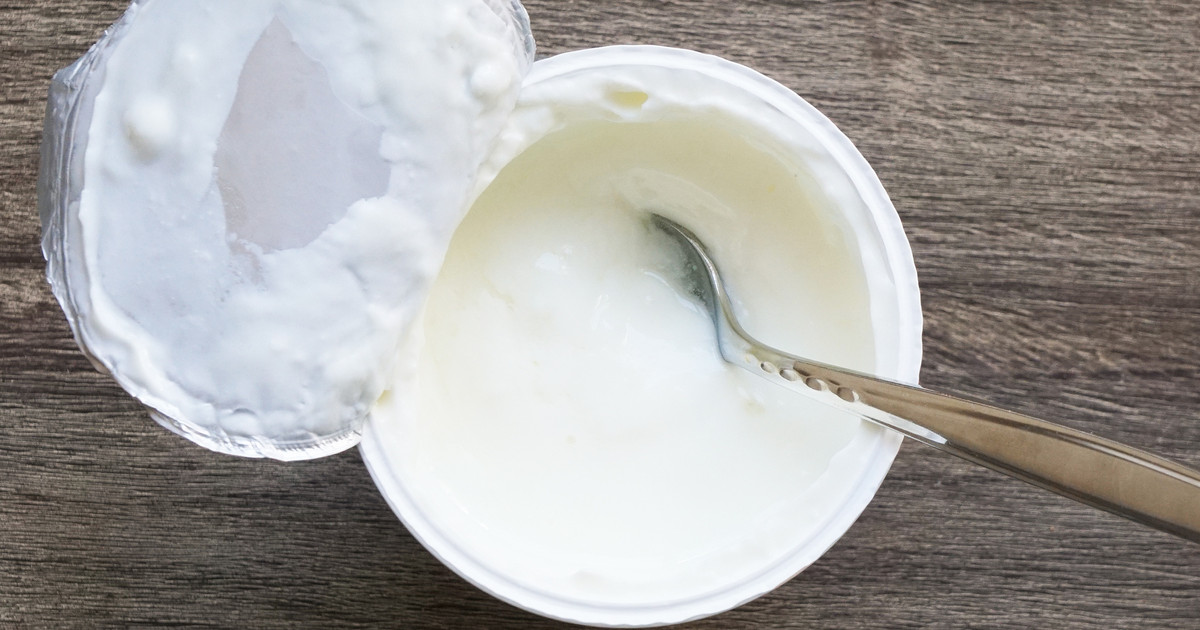Greek Yogurt Vs. Regular Yogurt: Which Is Healthier?
For many, Greek yogurt has become a must-have snack throughout their day. Not only has it proven to be delicious, but it's actually packed full of nutritional value. Often called strained yogurt, this form of yogurt is strained to remove most of its whey, resulting in a thicker consistency without minimizing its delicious flavor. It's also typically made to be fat-free or reduced fat. However, there is still some confusion as to the difference between Greek yogurt and regular yogurt. Which is more healthy and why? By the end of the discussion, it should be made clear the nutritional value of Greek yogurt and how it exceeds regular yogurt.
Protein

Protein is the building-block of mass. For individuals interested in developing muscle, consuming a lot of protein is required. This amino is also required to build energy. When it's broken down, the body receives energy, allowing you to work through that last hour in the office or push through to another mile on your run. It also is the building blocks for hair, nails, and skin. So, if individuals receive an injury, this is what will help them heal. In yogurt, for a six-ounce serving, Greek yogurt possessed fifteen to twenty grams of protein, which is a stark difference from the nine grams regular yogurt provides.
As such, bodybuilders and those interested in being healthy, or just powering through the workday, regularly make ingesting Greek yogurt part of their day. Whether it's in their smoothie for breakfast, a crucial part of their lunch, or a workday snack, this little packet of delicious cream can be the deciding factor between a sluggish day or an energized one.
Continue reading to discover the next factor in debating if Greek yogurt is indeed healthier than regular yogurt.
Calcium

When it comes down to the amount of calcium, Greek yogurt is left in the dust. Calcium plays a much larger part in the body than individuals might realize. Of course, it's common knowledge it is necessary to keep bones strong, which is especially important when individuals get older, as bone mineral and mass starts to reduce as humans age. Because of this, cases of osteoporosis have become frequent. In this condition, bones lose too much mass and become brittle, and thus, it becomes easier to break them. These injuries could become life-altering for many men and women who then require assisted help to move around or perform otherwise regular activities in life.
This molecule also helps blood clot, so individuals don't bleed to death. As such, when individuals need an extra dose of it, they should choose regular yogurt. Research has shown regular yogurt contains approximately 488 milligrams whereas Greek yogurt only contains 248 milligrams. So, regular yogurt is the clear winner of this round.
Continue reading to uncover details on the next factor in this great yogurt debate.
Sodium And Sugar

Unless individuals have a condition in which they require a large dose of sodium in their diet, typically, a lot of sodium is a bad thing, which is also true of sugar. As such, it's key to look at the amount of sodium and sugar each yogurt possesses to determine which is healthier. In regards to sodium, too much of it can lead to heart disease and increases the risk of a stroke. This is because it can raise blood pressure, and after it reaches a critical point, an individual's body starts to shut down. Sodium is practically in everything individuals eat, and as a result, they're likely receiving more sodium than they need. Individuals should go with Greek yogurt to reduce the sodium they consume. It contains roughly eighty-one milligrams as opposed to regular yogurt's 189 milligrams.
The same story goes for sugar. Too much sugar is bad for an individual's health and body. Thus, they should go with Greek yogurt here as well, as it has only seven grams compared to regular yogurt's nineteen grams. Less sugar helps the body run more efficiently.
Get to know the next factor for which yogurt is healthier now.
Carbohydrates

Perhaps the trickiest molecule when it comes to an individual's diet is carbohydrates. Are they good or bad? It tends to come down to what kind of carbohydrate they are, as there are simple carbohydrates and complex ones. Simple carbohydrates can be broken down quickly and used as an energy source, and the complex ones take a bit longer to be broken down. This can be good in that it provides individuals with more energy longer, but if they have stored up enough energy already, these carbohydrates can be packed away as fat.
As many individuals probably know, fat isn't necessarily a good thing. While everyone does require some fat to keep warm and to have a reliable source of energy if they have to skip a meal for some reason, too much fat can lead to other health problems. As such, it's best for individuals to keep their carbohydrate intake down overall, but they should be sure they're still receiving an adequate amount to keep their body thriving. In this case, Greek Yogurt wins once more, as it has eight grams of carbohydrates over regular yogurt's nineteen grams.
Keep reading to learn more about which yogurt is healthier overall.
Versatility

When it comes down to it, regular yogurt is only good for one thing: eating regular yogurt as it is. Individuals may be able to dress it up or down, but at the end of the day, it still only serves one purpose. Greek yogurt, on the other hand, has seen a wide amount of use. Its versatility is incredible. Because of its lack of whey, for instance, it can be used as a substitute for fat in baked goods, which can make the good just a tad bit healthier. Individuals can easily swap cream cheese, butter, oil, sour cream, or even mayonnaise with Greek yogurt to cut down those calories as well. It's even been used in some topical creams.
Read more about how Greek yogurt and regular yogurt compare now.
Thickness And Consistency

In terms of thickness and consistency, Greek yogurt has a thicker texture and creamier consistency compared to regular yogurt. Whey, a watery liquid, usually sits on the surface of regular yogurt. However, it is removed from Greek yogurt during the manufacturing process, and this removal produces the change in texture between the two yogurts. Individuals can choose the texture they prefer, and it is easy to alter the thickness and consistency of any yogurt by adding a few extra ingredients. For example, a thin yogurt can be thickened by adding jam, and berries or bananas may provide a pleasant creaminess. Yogurt that is too thick can be thinned by adding milk.
Keep reading to learn about how these yogurts compare in regards to flavor and potency next.
Flavor Options And Potency

In terms of flavor options and potency, shoppers have many choices with both types of yogurt. Greek yogurt and regular yogurt come in plain and sweetened varieties, and many include fruit, jam, nuts, granola, and other toppings. Peach, strawberry, blueberry, and vanilla are a few of the most popular flavors, and both types of yogurt now come in dairy and non-dairy formulations. Dairy yogurt is usually made with cow's milk, and some individuals might enjoy yogurt made from goat's milk as well. Non-dairy yogurt can be made from almond, soy, coconut, rice, or oat milk. Yogurt made from oat, soy, or rice milk typically has a neutral flavor. Coconut milk tends to give yogurt a slightly tangy flavor, and almond milk can impart a somewhat nutty taste. To increase the potency of a particular flavor, individuals may want to experiment with adding different toppings. For example, adding fresh blueberries will increase the fruity taste of blueberry yogurt, and honey will intensify the sweetness of vanilla yogurt.
Get familiar with the fat content to both types of yogurt next.
Fat Content

Greek yogurt generally has a higher fat content than regular yogurt. Some brands of full-fat Greek yogurt have sixteen grams of saturated fat in a seven-ounce serving. By comparison, many brands of full-fat regular yogurt have an average of five grams of saturated fat in an eight-ounce serving. Saturated fat increases the risk of cardiovascular disease, and it is associated with increases in total cholesterol and low-density lipoprotein cholesterol (the unhealthy kind). Doctors suggest a daily limit of eleven to thirteen grams of saturated fat for patients with high cholesterol or other risk factors for cardiovascular disease. Nutritionists advise patients to choose low-fat Greek yogurt when possible, and some may want to choose fat-free Greek yogurt. Even though regular yogurt tends to have a lower fat content than Greek yogurt, it is still important to be mindful of daily fat intake, and patients might wish to consider low-fat versions of regular yogurt as well.
Food diaries can help patients monitor their fat intake and find healthy ways to incorporate yogurt into their daily nutrition budget. When shopping for yogurt at the grocery store, doing a side-by-side comparison of nutrition labels enables patients to see which yogurt has a suitable balance of fat, sugar, and protein. In addition to checking the saturated fat content, nutritionists advise patients to be aware of the total fat content of each yogurt. A low-fat diet usually contains a maximum of thirty percent fat. For individuals with a daily calorie goal of two thousand calories, a low-fat diet would allow for sixty-seven grams of fat each day. Patients on low-fat diets with a limit of 1,500 calories per day have a recommended daily fat intake of fifty grams. Doctors and nutritionists can provide advice on healthy portion sizes and other ways to manage the fat content of yogurt.
Discover the details regarding probiotics in Greek yogurt and regular yogurt next.
Probiotics

Probiotics are microorganisms that may help with maintaining and enhancing the body's normal microflora ('good' bacteria). Both Greek yogurt and regular yogurt contain probiotics, and they are also found in sauerkraut, kimchi, and kefir. When shopping for yogurt with probiotics, it is important to check the nutrition label to make sure the product contains live or active cultures. Research suggests probiotics may be useful in the treatment and prevention of irritable bowel syndrome, pouchitis, infectious diarrhea, antibiotic-associated diarrhea, and Clostridium difficile disease. Other studies suggest probiotics could help reduce the symptoms of depression and decrease low-density lipoprotein cholesterol ('bad' cholesterol). While probiotics are generally recognized as safe, patients who have cancer or other conditions that compromise the immune system should ask their doctor before consuming foods or supplements that contain probiotics. Individuals who take antifungal medicine are advised to wait until their infection has resolved before using probiotics. When patients first start taking probiotics, they may notice diarrhea, gas, or bloating. These symptoms usually resolve on their own after a few weeks of using probiotics. If unpleasant symptoms persist, switching to a different type of probiotic might help.
Learn about potassium as it applies to Greek yogurt and regular yogurt next.
Potassium

Potassium is involved in the regulation of blood pressure, and it also helps with muscle contraction and the maintenance of a healthy fluid balance. The recommended daily intake of potassium is 3,400 milligrams for adult males and 2,600 milligrams for adult females. All types of yogurt contain potassium, and patients should check the nutrition label to compare potassium levels between different brands. In general, regular yogurt contains more potassium than Greek yogurt. A six-ounce serving of regular yogurt provides roughly 398 milligrams of potassium, and the same amount of Greek yogurt contains around 240 milligrams of potassium. Patients with kidney disease may need to monitor their potassium intake, and they should check with their doctor before consuming yogurt or other high-potassium foods.